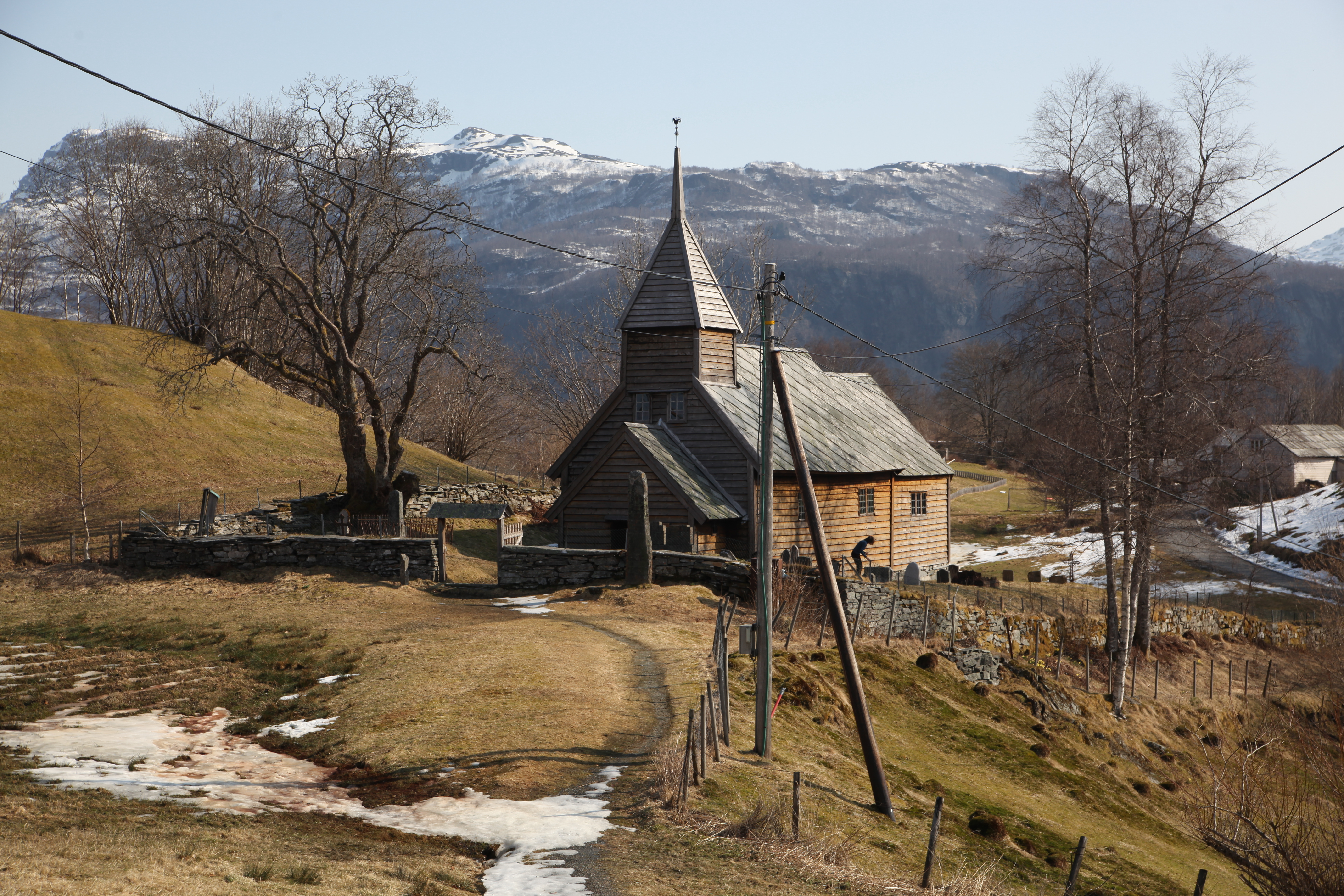
HOLDHUS CHURCH (NORWAY)
A Wooden Gem under the Care of Norway’s National Trust
The little wooden church of Holdhus, near the Hardangerfjord, is among the most picturesque historic churches of Western Norway. It is beautifully nestled in a fold of a mountain valley against an often-snow-capped backdrop. The church lies on a small walled churchyard populated with romantically leaning graves of stone and cast-iron. The building has been in private ownership since 1720, when King Frederick IV sold it off to finance his war against Sweden. Regular use for worship ceased in 1890, and ten years later the church was transferred to the Norsk Fortidsminneforening (the National Trust of Norway). Nowadays, the church of Holdhus is only used for the yearly Olsok-celebration (St Olav’s day on 29 June) and for occasional weddings and funerals, while it also serves as a preferred goal for cruise tourists who take day trips from nearby Bergen.
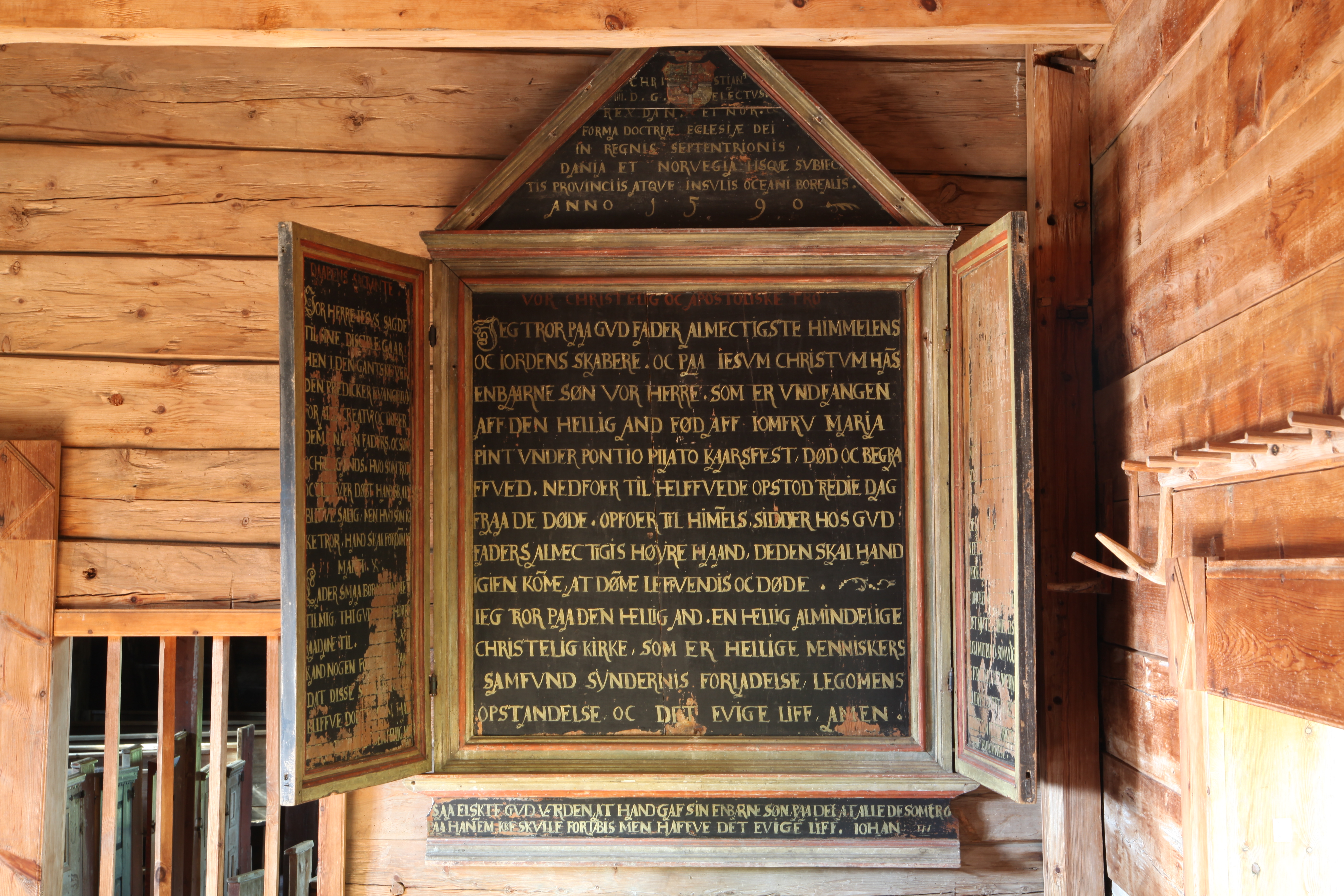
The present church was erected in 1726. However, the interior largely breathes the atmosphere of the medieval predecessor that is known to have stood on the same spot and that was probably of similar proportions. Such medieval wooden churches are known in Norway as ‘stavkirker’ (stave churches). Today, only twenty-seven stave churches survive out of over one thousand that dotted the Norwegian landscape at the time of the Lutheran Reformation in 1537. In Holdhus, reused elements from the stave church are several planks in the nave’s west wall, as well as the west door. Other survivals include the two church bells that hang in the steeple and that can be dated to the fourteenth or fifteenth centuries.
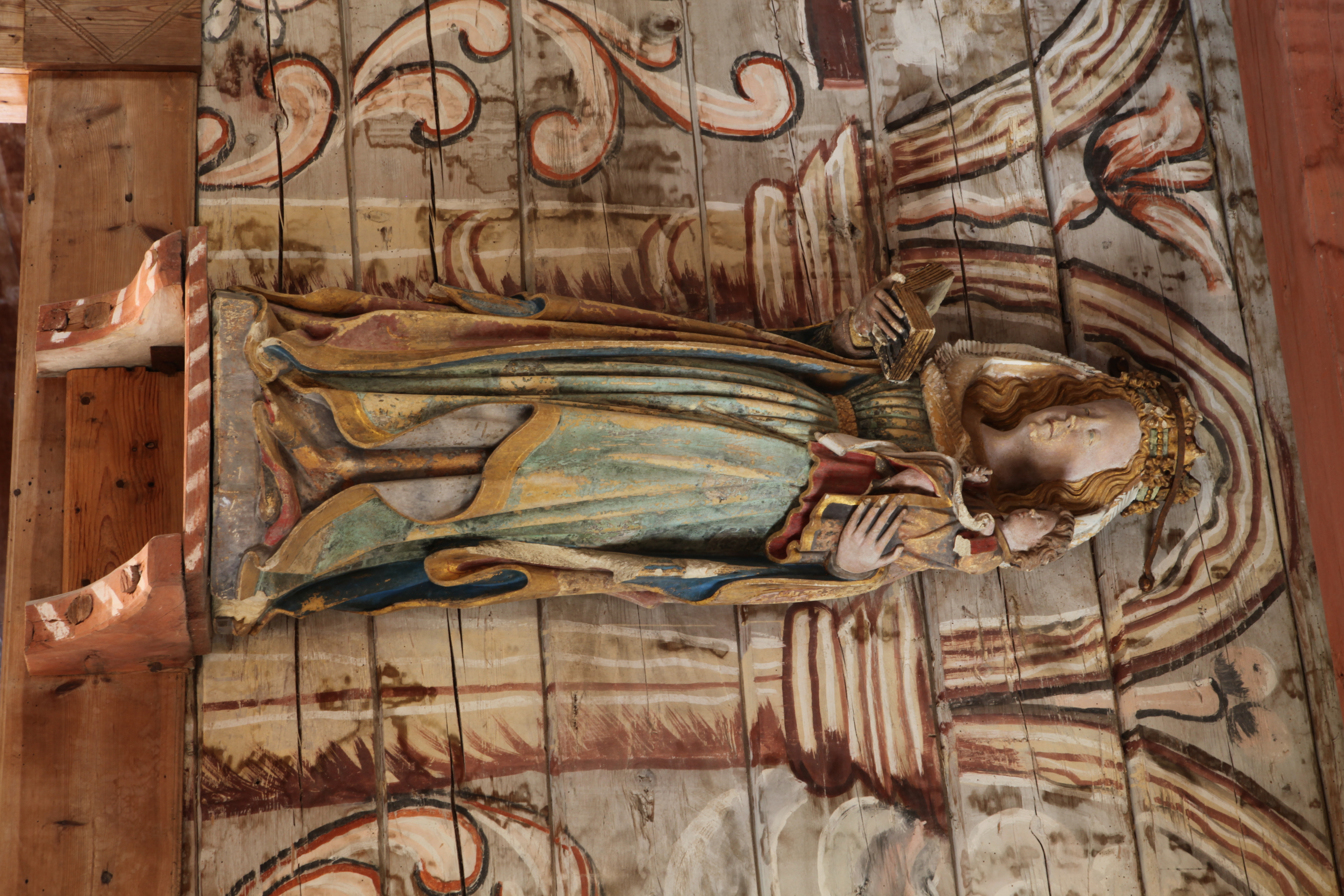
The earliest written record of a church in Holdhus (called ‘Haaland i Rossadal’) is a reused parchment with a short inventory of the church dated in 1306. The building is said to be composed of a ‘forkirkian’ (=nave), chancel and ‘stopplinum’ (steeple) with two bells, one of which may have been preserved. The ritual equipment of the small rural parish church was remarkably complete: the walls were hung with cloths and tapestries, there were three altar cloths, three chasubles, two of which were made of fur, a gilded chalice, two altar bells, copper candlesticks, a water kettle, a Calvary group clad with silver plates, two wooden crosses, a Marian sculpture, and a silken banner. In addition, the church possessed several books including a missal, two psalters and a hymnal.
Upon entering the church today, the eye is caught by a rare painted sandstone sculpture of the Virgin and Child from c. 1450 sitting over the doorway that gives access to the chancel. The figure probably belonged to a side altar, but it may also have been transferred to Holdhus from another church only after the Reformation. The crowned Virgin holds an opened book on her right hand while Christ, who holds a scroll, sits on her left. The painted decoration is the original one. Stylistically, the sculpture points at origins around the south shore of the North Sea, in Northern Germany or the Low Countries. Since Westphalia was a centre of late Gothic sandstone carving, it may have been produced there and reached Norway through commercial connections of the Hanse, which dominated the stockfish trade in Bergen.
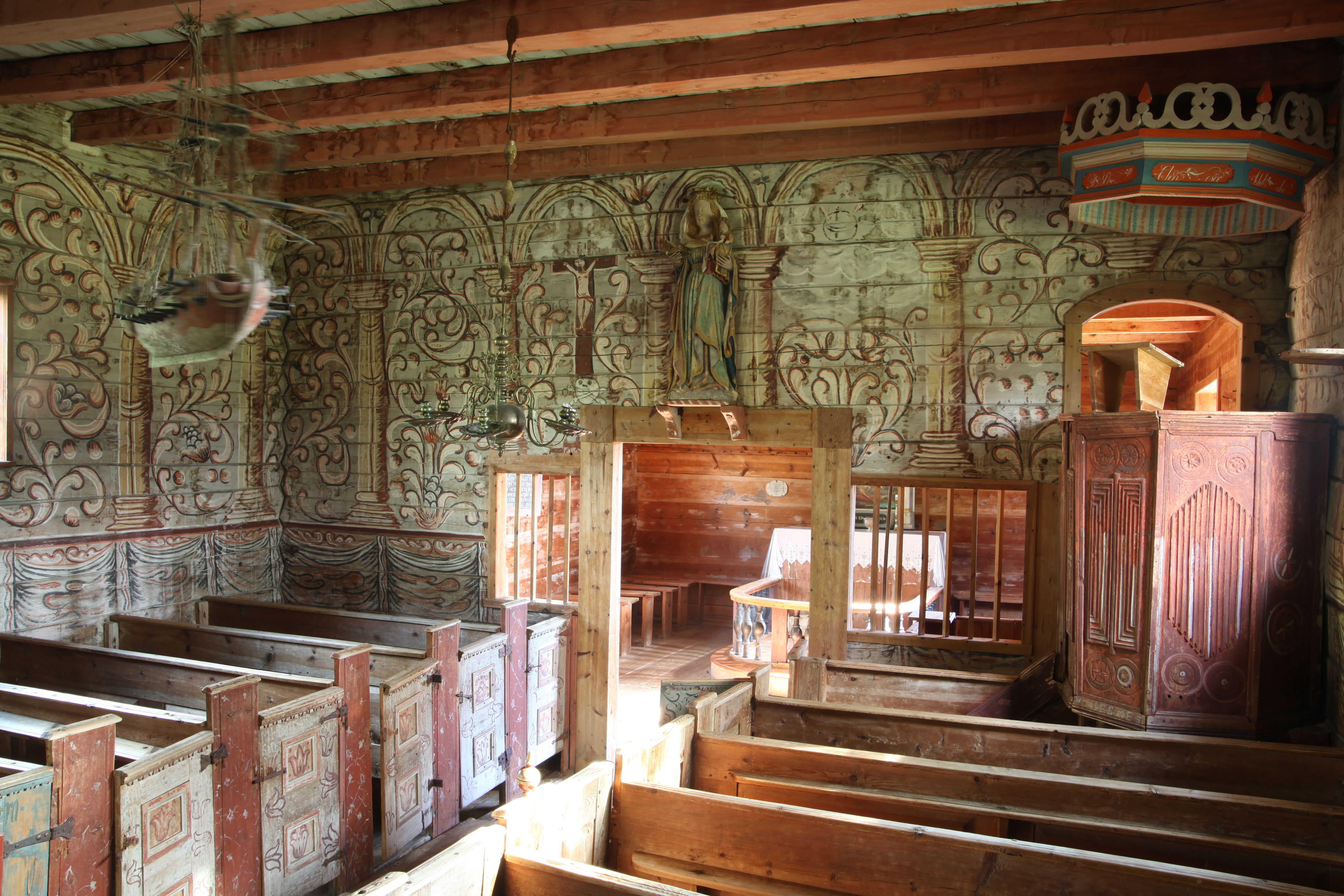
The nave walls are painted in the late Baroque, so-called ‘rose-style’ (rosemaling). The curtain motifs in the lower section seem to imitate the hanging cloths and tapestries mentioned in the medieval inventory. Above it is a round-arched arcade filled with vines and foliage. The arches flanking the Marian sculpture contain a folksy painted Crucifix on top of a skull and a church model on the left, and Christ as Salvator Mundi on the right (now faded). The ceiling features a painted sun and moon, the dualistic symbols of day and night, Good and Evil. In the central aisle hang a seventeenth-century votive ship and a brass chandelier donated in 1716. The nave is filled with two rows of simple but charming wooden benches closed with painted shutters at the front. Several deer antlers on the south wall served as hat-pegs to the men who sat on this side. In the southeast corner is a wooden pulpit decorated with simple geometrical carvings that can be dated to c. 1570, making it one of the earliest pulpits in Norway (the tester was only added around 1850). The raised gallery before the west wall never accommodated an organ – the churchgoers of Holdhus sung a capella.
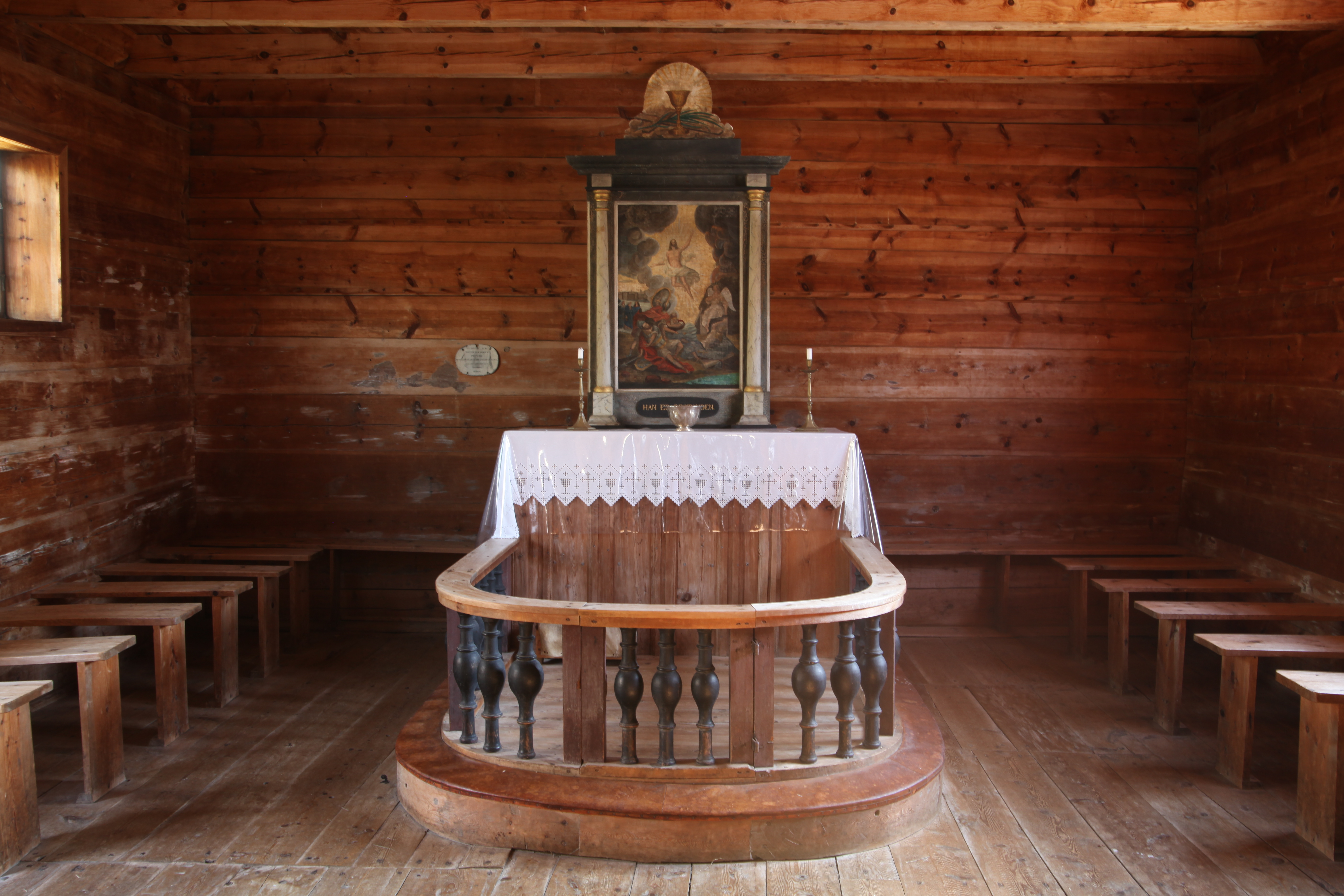
The wooden altar in the chancel carries a Neo-Classical altarpiece from 1839 featuring the Resurrection. Its predecessor from 1590, in the shape of a triptych, now hangs on the west wall of the chancel to the north of the opening to the nave. It is a so-called ‘catechism panel’ (‘katekismustavle’) inscribed with golden letters on a black background reading the central tenets of Lutheran worship – Creed (centre), Baptism (left wing) and Communion (right wing) – under a triangular gable that mentions King Christian IV as head of “the northern kingdoms of Denmark and Norway with their appurtenant provinces and the islands of the Northern Ocean” (in regnis septentronis Dania et Norvegia iisque subiectis provinciis atque insulis oceani borealis). The last-mentioned territories are the Færøer islands, Iceland and Greenland. The predella below reads John 3:16.
Text triptychs became widespread in Western Norway under Jens Pedersen Skjelderup, the Lutheran Bishop of Bergen (1557-1582), who leaned toward Calvinism. In 1589, a synodal decree ordered the removal of all remaining medieval images. However, the stone Madonna in Holdhus illustrates that it only had a partial effect. The coexistence of medieval and modern furnishings in Holdhus is characteristic of Lutheranism in general, where the legacy of the medieval church was often treated with respect and where existing furnishings and customs could live on for a long time after the Reformation. In this isolated mountain valley, moreover, centuries of preserving poverty and frugality, followed by the care of the National Trust of Norway did the rest to ensure the survival of this little wooden gem – an eighteenth-century church with the feel of an authentic medieval ‘stavkirke’.
Text and photos: Justin Kroesen, University of Bergen (Norway)
Lit: Anne Marta Hoff, ‘Holdhus kyrkje’, on www.norgeskirker.no





Follow us: